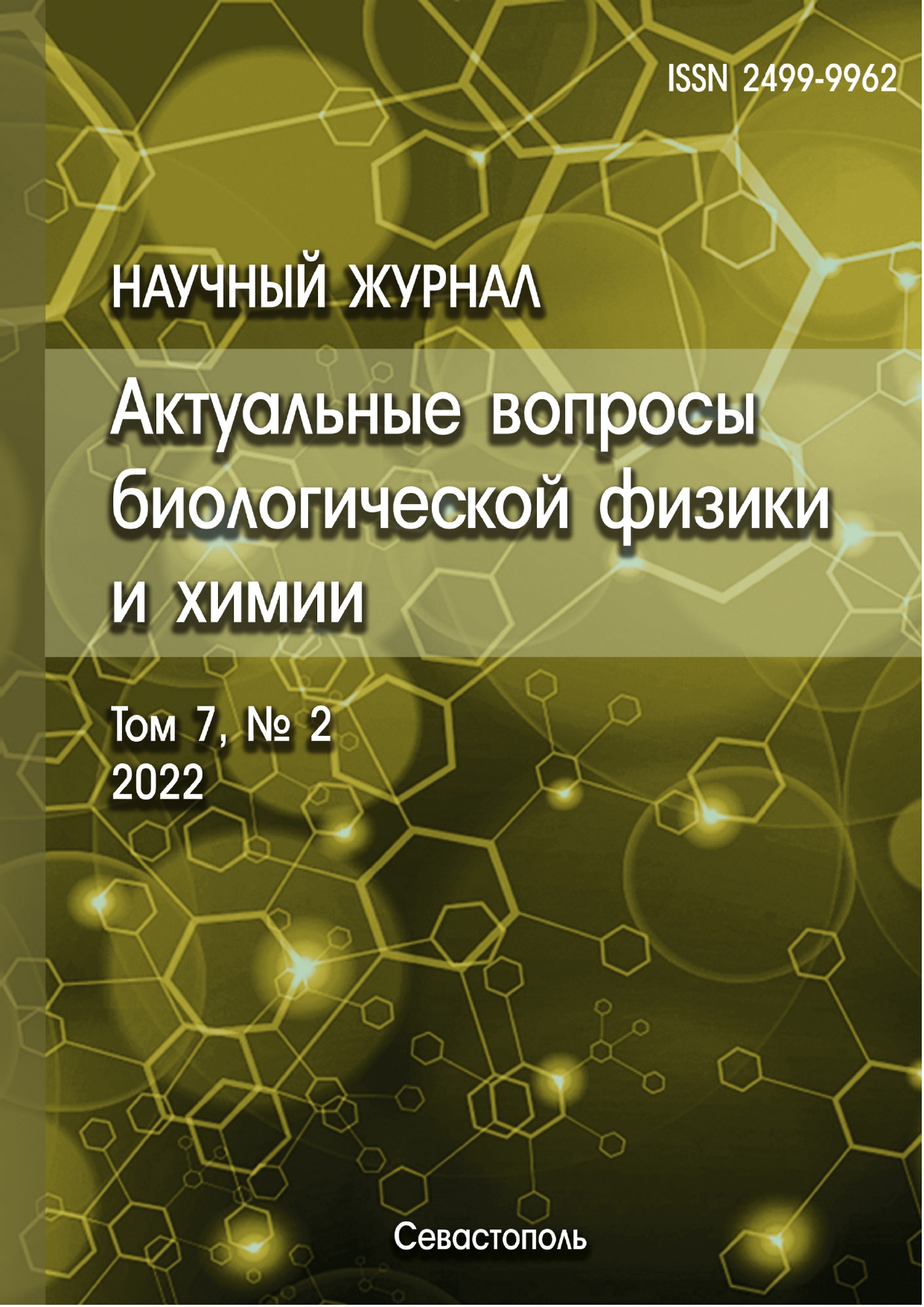Pirogov Russian National Research Medical University
Kotelnikov Institute of Radioengineering and Electronics of RAS (Fryazino branch)
Moscow, Moscow, Russian Federation
Kotelnikov Institute of Radioengineering and Electronics of RAS (Fryazino branch)
Moscow, Moscow, Russian Federation
Kotelnikov Institute of Radioengineering and Electronics of RAS (Fryazino branch)
Moscow, Moscow, Russian Federation
Fryazino, Moscow, Russian Federation
Moscow, Moscow, Russian Federation
Moscow, Moscow, Russian Federation
Moscow, Moscow, Russian Federation
Moscow, Moscow, Russian Federation
Moscow, Moscow, Russian Federation
Moscow, Moscow, Russian Federation
Optimal conditions were selected for obtaining the liposomal form with lipoic acid (LA) and carnosine. Using methods of active and passive loading, it was possible to achieve high efficiency inclusion of carnosine (60±5%) and lipoic acid (75±5%) in nanoparticles (NPs). It has been shown that the addition of sucrose or cholesterol (Chol) to nanodispersions (NDs) led to a slight decrease in the efficiency incorporation of carnosine in nanoparticles (45±5%). The production of PC-liposomes (PC-Ls) with LA and carnosine by passive loading led to a significant decrease in the efficiency inclusion of carnosine in liposomes (16%). At the same time, the efficiency of inclusion of LA in PC liposomes using methods of both passive and active loading practically did not change (58-69%). It has been found that the obtained nanodispersions are homogeneous system of nanoparticles with size of 175-250 nm. By transmission electron microscopy, it has been shown that LA+Carn. Liposomes represent a homogeneous system consisting mainly of spherical nanoparticles with a size of 120-200 nm. It is important to note that the obtained liposomes with LA and carnosine are stable during long-term storage (15 months) at + 4 ° and at room temperature. It was established that liposomes LA with Carn exhibit an antioxidant effect, leading to a 15-fold decrease in the concentration of lipid peroxidation products. The effect of the obtained liposomal forms on platelet aggregation caused by arachidonic acid has been revealed. It has been found, that liposomes with LA and carnosine reduce the degree of aggregation of platelets by 60-70%, relative to controls.
lipoic acid, carnosine, nanoparticles, liposomes, platelets, arachidonic acid
1. Burchinsky S.G. Brain ischemia: the possibilities of complex pharmacological correction. Articles of the Gerontology Institute of the Academy of Medical Sciences of Ukraine, 2006, vol. 14, pp. 15-18. (In Russ.)
2. Gusev E.I., Skvortsova V.I. Cerebral ischemia. M.: Medicine, 2001, 328 p. (In Russ.)
3. Solovieva E.Yu., Mironova O.P., Baranova O.A. et al. Free-radical processes and antioxidant therapy for cerebral ischemia. Zhurn. nevrol. and psychiatrist., 2008, vol. 108, no. 6, pp. 88-94. (In Russ.)
4. Mitsui Y., Sahmelzer J.D., Zollman P.J. et al. Alpha-lipoic acid provides neuroprotection from ischemic-reperfusion injury of peripheral nerve. Journal of the Neurological Sciences, 1999, vol. 163, pp. 11-16.
5. Clark W.M., Rinker L.G., Lessov N.S., Lowery S.L., Cipolla M.J. Efficacy of antioxidant therapies in transient focal ischemia in mice. Stroke, 2001, vol. 32, pp. 1000-1004.
6. Deng H., Zuo X., Zhang J., Liu X., Liu L.I., Xu Q., Wu Z. α- Lipoic acid protects against cerebral ischemia/reperfusion induced injury in rats. Molecular medicine REPORTS, 2015, vol. 11, pp. 3659-3665.
7. Packer L., Tritschler H.J., Wessel K. Neuroprotection by the metabolic antioxidant alpha-lipoic acid. Free RadicBiol Med., 1997, vol. 22, pp. 359-378. EDN: https://elibrary.ru/AKIVYL
8. Lai Y.S., Shih C.Y., Huang Y.F., Chou T.C. Antiplatelet activity of alpha-lipoic acid. J Agric Food Chem., 2010, vol. 58, pp. 8596-8603.
9. Shchelkonogov V.A., Sorokumova G.M., Baranova O.A., Chekanov A.V., Kazarinov K.D. et al. Liposomal form of lipoic acid: preparation and determination of antiplatelet and antioxidant activity. Biomedical chemistry, 2016, vol. 5, pp. 577-583. (In Russ.) DOI: https://doi.org/10.18097/PBMC20166205577; EDN: https://elibrary.ru/WTOQSF
10. Castelletto V., Cheng G., Stain C., Connon C.J., Hamley I.W. Self-Assembly of a Peptide Amphiphile Containing L Carnosine and Its Mixtures with a Multilamellar Vesicle Forming Lipid. Langmuir, 2012, vol. 28, pp. 11599-11608. DOI: https://doi.org/10.1021/la302210b; EDN: https://elibrary.ru/XZFTYZ
11. Fadeeva D.A., Khalikova M.A., Zhilyakova E.T., Novikov O.O., Novikova M. Yu., Popov N.N., Sorokopudov V.N. Analytical characteristic of carnosine. Series Medicine. Pharmacy, 2010, vol. 93, pp. 179-184. (In Russ.)
12. Bae O.N. Serfozo K., Baek S.-H et al Safety and efficacy evaluation of carnosine, an endogenous neuroprotective agent for ischemic stroke. Stroke, 2013, vol. 44, pp. 205-212.
13. Shen Y.P., Shen Y.P., He Y.-Y. et al. Carnosine protects against permanent Cerebral ischemia in histidine decarboxylase knockout mice by reducing glutamate excitotoxicity. Free Radical Biology & Medicine, 2010, vol. 48, pp. 727-735.
14. Rajanikant G., Rajanikant G., Zemke D., Senut M.C. et al. Carnosine is neuroprotective against permanent focal cerebral ischemia in mice. Stroke, 2007, vol. 38, pp. 3023-3031.
15. Akiba S., Matsugo S., Packer L., Konishi T. Assay of Protein-Bound Lipoic Acid in Tissues by a New Enzymatic Method. Analytical biochemistry, 1998, vol. 2, pp. 299-304.










